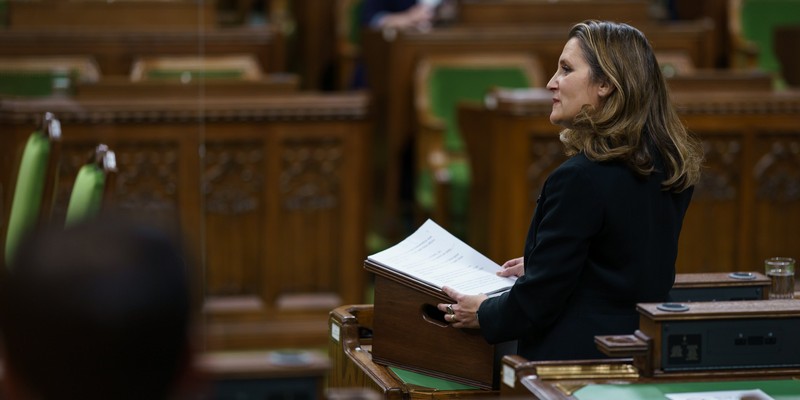New COVID spending may do more harm than good

Finance Minister Chrystia Freeland recently announced the federal government will spend an additional $7.4 billion on new COVID support programs until May 2022. While this new spending was introduced as a way to protect Canadian jobs and businesses, these new support programs will add to the country’s fiscal issues and potentially harm the economy.
After spending more than $95 billion on the Canada Emergency Wage Subsidy (CEWS) in an attempt to avoid layoffs, Ottawa is now replacing the program with a myriad of new initiatives. For instance, the Tourism and Hospitality Recovery Program will provide up to a 75 per cent subsidy to hotels, restaurants, and tourism agencies, whereas the Hardest-Hit Business Recovery Program will offer wage and rent assistance to other businesses. The Canada Worker Lockdown Benefit (CWLB) will also pay $300 per week to workers who are unemployed due to a COVID-related lockdown.
Despite the good intentions of these programs, however, the government may end up harming the Canadian economy rather than helping it. Specifically, the new lockdown benefit (CWLB) will pay workers to stay home and continue to support people that are not in the labour market. By reducing the number of workers, even temporarily, Ottawa will continue to impede economic recovery.
The lockdown benefit may also have the unintended consequence of furthering or even worsening labour shortages after a lockdown is over, as workers permanently exit their industry or seek more stable employment options elsewhere. Several businesses, particularly in the service industry, have recently reported difficulties finding workers.
Supply chain disruptions, high levels of government spending, and labour shortages have already created demand and supply problems that have increased inflation. Indeed, inflation is currently estimated to be at an 18-year high in Canada, as the prices of items such as food and gasoline have risen substantially. Continuing to support people that are not in the labour market through new programs could aggravate inflation further by constraining labour supply while maintaining or even stimulating demand in the economy. Inflation ultimately takes a bite out of Canadian wallets and could cause considerable economic pain if it continues on its current trajectory.
A related issue is that new COVID spending will also add to the current record levels of federal spending, which are being financed by borrowing. In 2021, per-person federal spending (adjusted for inflation) is already expected to be over $13,000, which is the second highest level in Canadian history. Per-person spending this year is estimated to be 42 to 50 per cent higher than the 2009 recession and up to 74 per cent higher than at the peak of the Second World War. Adding further spending on top of this amount will only compound our fiscal issues by increasing Canada’s debt.
The disregard for the effects of borrowing and debt accumulation is why Canada has the fifth-highest level of total government debt among 29 industrialized countries. Gross debt (total liabilities) stood at $1.1 trillion in 2015-16. By 2025-26 gross debt is expected to reach $2.0 trillion, an increase of 91.6 per cent in a decade.
Given the rise in inflation and comparative increase in the riskiness of Canadian debt it’s not hard to imagine nominal interest costs increasing in the near term. A rise in interest costs would further erode federal finances and increase debt levels.
Clearly, the new COVID measures announced this week have the potential to exacerbate inflation and result in deteriorating public finances. Regardless of intentions, the federal government may be doing more harm than good.
Author:
Subscribe to the Fraser Institute
Get the latest news from the Fraser Institute on the latest research studies, news and events.

